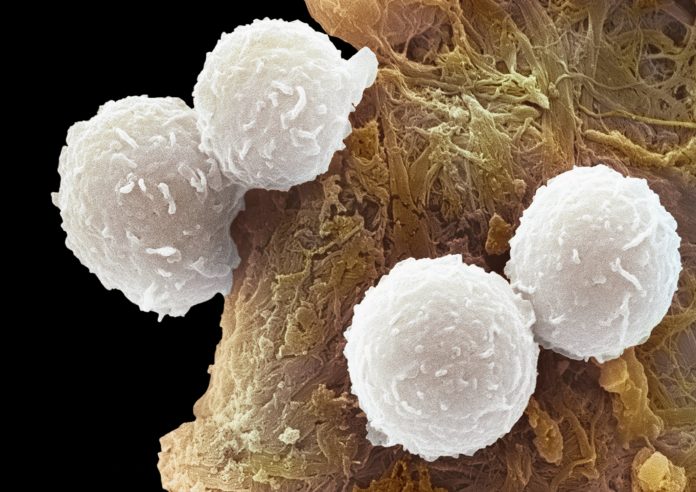
Patients with slow-growing chronic lymphocytic leukemia (CLL) with no symptoms and a low risk for ever needing treatment who stopped specialist visits showed comparable three-year survival rates compared with those who continued to receive specialized follow up. The research from a team of Danish investigators, published today in Blood Advances, also show these patients had fewer hospital visits and contracted fewer infections.
“To the best of our knowledge, ours is the first study of what happens when specialist follow-up for CLL is stopped,” said senior author Carsten Niemann, MD, PhD, chief physician in the department of hematology at Rigshospitalet in Copenhagen, Denmark. “Our findings show that it’s feasible to discontinue specialized follow-up in patients who have a very low risk of needing CLL treatment and that doing so does not cause these patients any harm.”
Of the people enrolled in the study 84% showed no signs of CLL progression and were not referred to a hematologist within three years. The other 16% of patients did show signs of progression and were referred for specialist care again and received treatment in a timely fashion, Niemann noted.
CLL is the most common blood cancer in adults and presents as either aggressive disease, or indolent, a disease of very slow growth. While aggressive CLL requires immediate treatment, the indolent form of the disease may remain stable for years without any form of treatment. Previous studies have shown that as many as 30% of patients with CLL will never need treatment. Despite this, most still receive specialized care.
The new research stems from an earlier study by Niemann and colleagues that published a validated list of symptoms that identified more than 40% of CLL patients with a yearly risk of needing treating of less than two-in-100. Based on this low need, the new study was designed to find out whether any of those with low risk disease needed specialist care.
For this latest research, the investigators tapped data from the Danish blood cancer database for all patients diagnosed with CLL, but were never treated, at Copenhagen’s Rigshospitalet. Patients identified as high or very high risk of needing treatment were excluded from the dataset.
From a group of 200 patients, the team selected 112 who were identified via their medical records to have low risk of eventually needing treatment and discontinued specialist follow-ups. These patients were advised to receive influenza and pneumonia vaccinations and to call a doctor if they ever developed fever, chills, night sweats, weight loss, or symptoms of infection. The remaining 88 patients continued with their follow-up visits.
Primary endpoint of the study was three-year survival and secondary endpoints included hospital contacts, the time to developing first infection, duration of these infections, three-year re-referral to a hematologist, and the time to needing first treatment for CLL. Patients in the study were followed for three years via medical records review.
Results showed that at three years, overall survival did not differ significantly for patients of similar risk profiles whether they had continued with specialist treatments or had stopped them. Among 2,811 hospital contacts in total, patients who ended and continued specialized follow-up had 873 (31%) and 1938 (69%) contacts, respectively.
“We have demonstrated that more than half of patients with low to intermediate risk for ever needing CLL treatment may safely be selected to stop specialized follow-up,” said Christian Brieghel, MD, PhD, a postdoctoral fellow in hematology at Rigshospitalet and the study’s first author. “They had lower use of hospital and health care resources, a lower frequency of infections, and if they had an infection, they were hospitalized for a shorter time, and their overall survival was comparable to similar patients who continued specialized follow-up care.”













